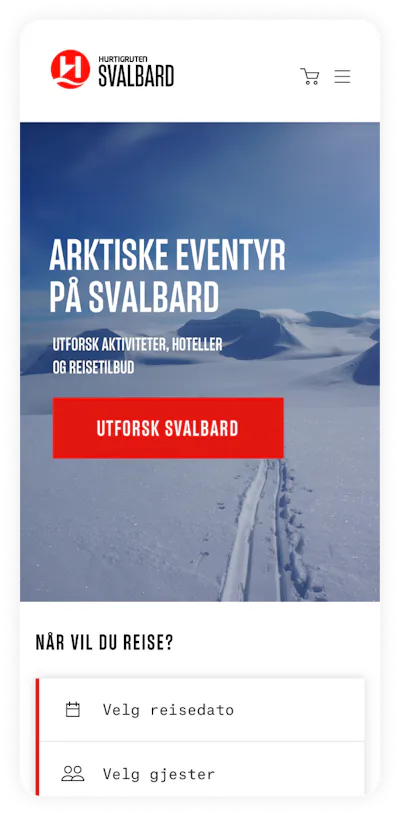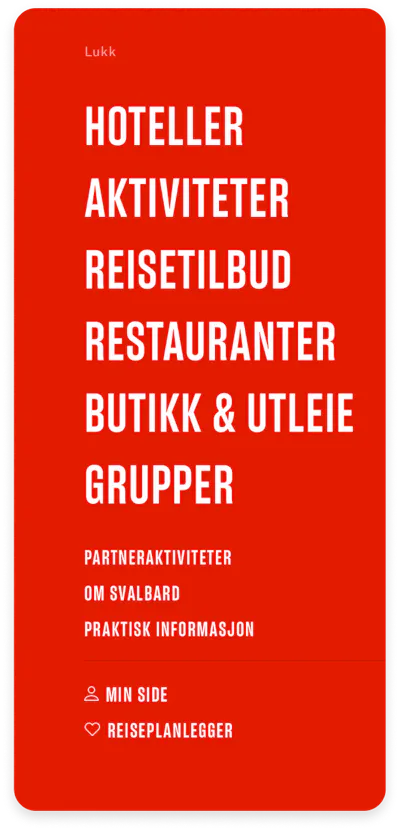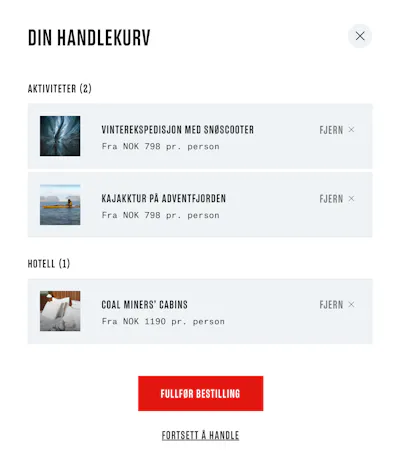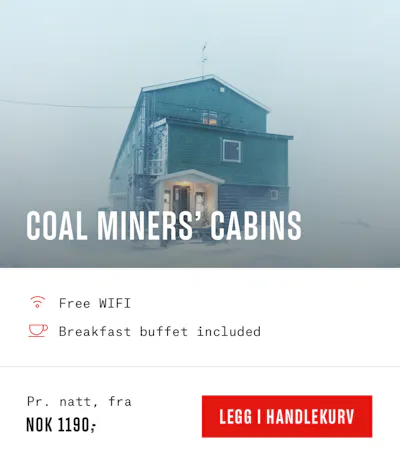Feed — Hurtigruten Svalbard

In the realm of e-commerce, a "Business first" attitude naturally makes the most sense. What will make the business thrive? Simple as that, as most people would agree. But in practicality, lot’s of things tend to dethrone this simple statement. Chief amongst these are technical limitations..
Business needs change over time, but technology often becomes an obstruction rather than a solution. This is especially problematic for businesses with monolithic systems that they’ve invested in over several years. Legacy tech is hard to change. Digital businesses are, well, in the business of change - they need to iterate rapidly.
Does a tweak in the product offering warrant replacing a behemoth of a system? Is it worth waiting in line for 6 months for the supplier to deploy amendments to the system?
When a large legacy laden business like Hurtigruten Svalbard asks us to combine itineraries from two different existing systems into one shopping cart, and steer reporting and accounting flow into a third, retaining that crucial “business first” attitude without pulling the "tech limitation handbrake" can be challenging. The good news is that it's perfectly doable.



—It’s somewhat of a misconception that technology needs to be hard.
It’s naive to think that you can toss every problematic system out the window and start fresh. The trick is being able to handle the unavoidable, recognise what should be replaced, and tie those together in an effective manner.
It’s somewhat of a misconception that tech needs to be hard. That is, if your developers are good. Thankfully, as a Reaktor company, we have access to some of the best in the world.
Great developers have a magical side effect. When we have full confidence in technology as a completely solvable problem, we can allow ourselves to remain sharply focused when we ask what our clients business really needs in order to reach its goals. We can afford to be tech agnostic.



Combining two worlds into one.
Going back to Svalbard, the simple, and business critical, quest was to combine hotels and activities into one unified shopping funnel. In practicality that means a host of legacy components on the hotel side, integrating towards digital distribution networks, POS, two different brand of hotels with different booking systems and so on. The activity component could be replaced, and our job was to join them together both in UX and tech to achieve that elusive One Cart, whilst sorting accounting flow into the same system as before.
Some numbers
34 weeks from
start to finish.
122 weeks less
than the competing
scope.
70% return on
investment.
Getting unstuck
For Hurtigruten Svalbard, this quest had been ongoing for quite some time already, every effort sidetracked by technical limitations. There where estimates floating indicating three years time before that One Cart could be achieved.
Feed x Reaktor spent 34 weeks from start to finish to solve it. Or 122 weeks less than the competing scope.
That’s good business.
Our delivery
User experience
Digital Design
Development
Collaborators
Backend development by Reaktor






